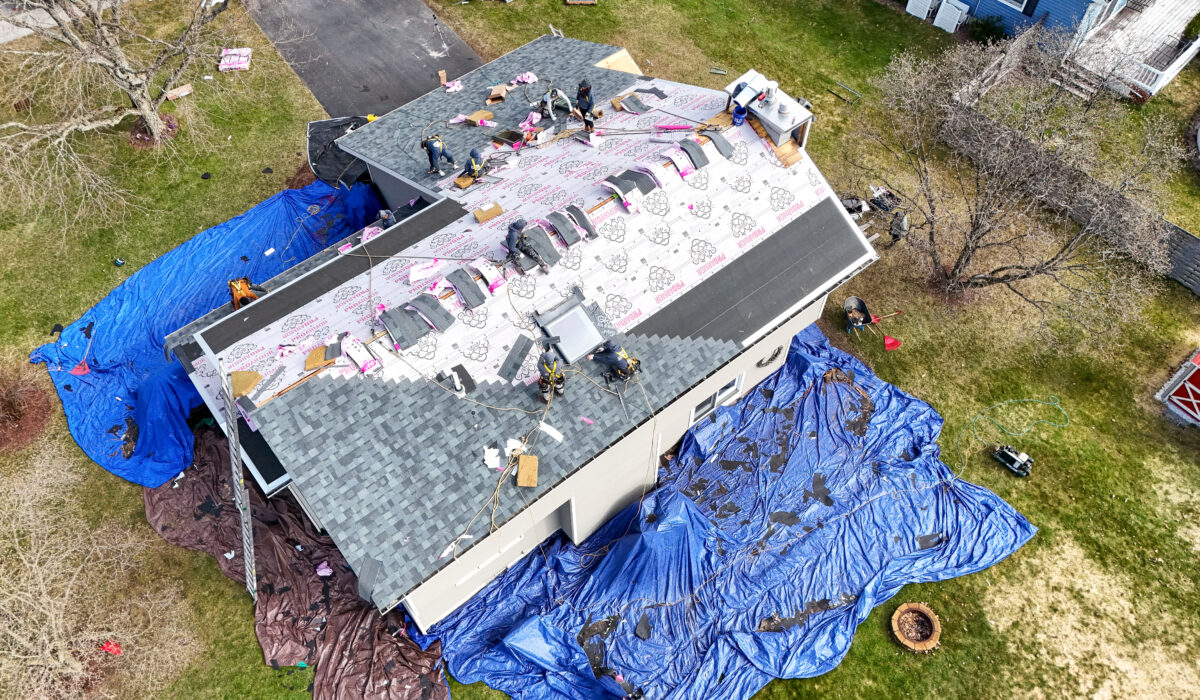An effective and durable roofing system relies not only on high-quality shingles and professional installation but also on a lesser-known yet essential component – roofing underlayment. Tucked away beneath the shingles or other roofing materials, underlayment serves as an additional layer of protection, keeping your home safe from water infiltration, wind-driven rain, and other external factors. As a leading provider of roofing services in Vermont, including new installations and repairs, Three Mountain Roofing understands the critical role roofing underlayment plays in safeguarding your home.
Stay informed with expert insights on roofing underlayment, its various types and materials, and how to make the best choice for your home. Learn how partnering with a reliable roofing contractor like Three Mountain Roofing can help you maintain a well-protected home and a dependable roofing system.
Why Roofing Underlayment Matters
Roofing underlayment serves as a crucial barrier between your roof deck and your roofing materials, providing numerous benefits that help protect your home and extend the life of your roof. Some key reasons why underlayment is essential include the following:
1. Water and Moisture Protection: Underlayment acts as a secondary defense against water infiltration, preventing moisture from seeping into your home and causing damage or mold growth. It also helps direct water away from your roof deck, preventing structural damage.
2. Wind Resistance: Roofing underlayment provides an additional layer of protection against wind-driven rain, ensuring that your home remains well-protected during extreme weather events.
3. Roofing Material Compatibility: The selected underlayment can enhance the compatibility of your roofing materials, helping to create a cohesive and unified roofing system.
4. Prolonged Roof Lifespan: By providing additional protection against the elements, roofing underlayment can prolong the lifespan of your roofing system and delay the need for roof replacement or major repairs.
Types of Roofing Underlayment
There are three main types of roofing underlayment, each with its unique properties and benefits.
1. Asphalt-Saturated Felt: This traditional underlayment, commonly known as felt paper or tar paper, is made from a combination of natural or synthetic fibers that are saturated in asphalt. Asphalt-saturated felt provides a moderate level of water and moisture resistance and is relatively straightforward to install. However, it may be susceptible to tearing and may not provide the same level of durability as other underlayment options.
2. Synthetic Underlayment: Made from synthetic materials such as fiberglass or polypropylene, synthetic underlayment is known for its durability, lightweight, and high resistance to water and moisture. Synthetic underlayment is generally more expensive than asphalt-saturated felt; however, it offers superior performance, making it an attractive option for homeowners seeking added protection and longevity.
3. Rubberized Asphalt Underlayment: This premium underlayment option is composed of rubberized asphalt, offering exceptional waterproofing and self-sealing capabilities. Rubberized asphalt underlayment is ideal for use in areas prone to ice dams or heavy snowfall, providing an extra layer of protection against leaks and water intrusion.
Choosing the Right Underlayment for Your Roof
Selecting the appropriate roofing underlayment depends on several factors, such as your local climate, roofing material, and budget. Keep the following considerations in mind when choosing the right underlayment for your home:
1. Climate: Consider the typical climate conditions in your area when selecting your roofing underlayment. If you live in a region with frequent rainfall or extreme temperature fluctuations, opt for an underlayment with superior water resistance and durability, such as synthetic or rubberized asphalt.
2. Roofing Material: Some types of roofing materials, such as wood shingles or certain types of metal, may require specific underlayment options to ensure compatibility and effective performance. Consult with your roofing contractor to determine the best underlayment choice based on your roofing material.
3. Warranty: Check your roofing material warranty to see if a particular type of underlayment is required to maintain valid coverage. Some manufacturers may stipulate specific underlayment materials in their warranty terms, and using a non-compliant option could void your warranty.
Working with a Trusted Roofing Contractor
Selecting the right roofing underlayment is vital for a well-protected and long-lasting roofing system. Partnering with an experienced roofing contractor like Three Mountain Roofing can ensure a smooth and successful underlayment installation, as well as provide expert advice on selecting the ideal underlayment for your unique circumstances.
A professional roofing contractor will prioritize quality craftsmanship and use high-quality underlayment materials to help you meet your home’s protection needs and maximize your roof’s lifespan. Trusting the expertise of a reliable contractor can enhance the performance of your roofing system and provide peace of mind in the knowledge that your home is well-protected.
Safeguard Your Home with Quality Roofing Underlayment
Roofing underlayment is an essential component of a durable and effective roofing system, providing water and moisture protection, wind resistance, and an extended roof lifespan. By selecting the ideal underlayment for your climate, roofing material, and budget and partnering with a trusted roofing contractor like Three Mountain Roofing, you can ensure your home remains well-protected from the elements and minimize the likelihood of costly repairs or premature roof replacement.
If you’re searching for reliable roofing companies in Vermont, get in touch with Three Mountain Roofing now. We’re here to discuss your roofing underlayment needs and offer the expertise of our experienced team to help you achieve a dependable, high-performing roofing system for years to come. Don’t hesitate to contact us today!
standing Roofing Underlayment: Its Importance and Types


